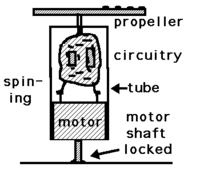boylesg
Advanced Member level 4

- Joined
- Jul 15, 2012
- Messages
- 1,023
- Helped
- 5
- Reputation
- 10
- Reaction score
- 6
- Trophy points
- 1,318
- Location
- Epping, Victoria, Australia
- Activity points
- 11,697
How would you go about transmitting power wireless from the stationary part of a POV clock to the spinning part?
Would you use an an SMPS arrangement and would these work without a core, i.e. just two loops of wire in close proximity?
If so does anyone no a good URL that explains the very basics of designing a SMPS.
Would you use an an SMPS arrangement and would these work without a core, i.e. just two loops of wire in close proximity?
If so does anyone no a good URL that explains the very basics of designing a SMPS.

